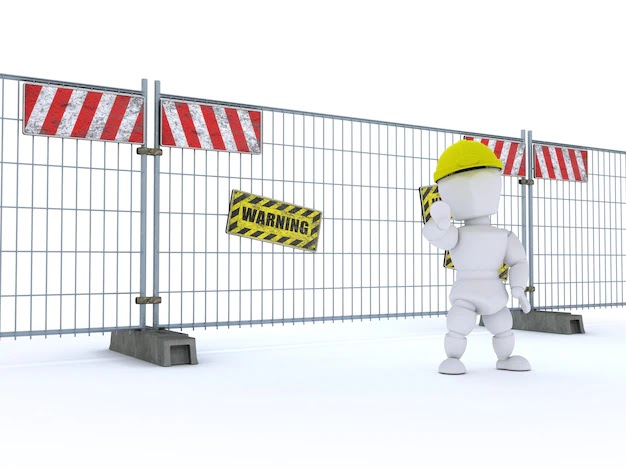
Problem-Solving Under Pressure
I. The Science Behind Pressure and Stress
When faced with high-pressure situations, our bodies activate the "fight or flight" response, releasing adrenaline and cortisol. While this response can heighten awareness, prolonged stress impairs cognitive functions, such as critical thinking and decision-making. Understanding this mechanism is the first step in managing pressure effectively.
II. Key Strategies for Problem-Solving Under Pressure
1. Stay Grounded with Breathing Techniques: Breathing exercises are a simple yet powerful way to calm your nervous system and regain focus. When stress peaks, take a moment to practice deep, controlled breathing:
a) Inhale for four counts, hold for four counts, and exhale for four counts.
b) Repeat this cycle until you feel more centered.
2. Break Down the Problem: Big problems can feel overwhelming, especially under pressure. To tackle them effectively:
a) Break the issue into smaller, manageable parts.
b) Address each component systematically.
c) Focus on solving one aspect at a time, which helps reduce the feeling of being overwhelmed.
3. Prioritize Tasks with the 80/20 Rule: The Pareto Principle, or 80/20 rule, states that 80% of outcomes come from 20% of efforts. Under pressure, identify the key actions that will drive the most impact.
a) Ask yourself: What is the single most important thing I need to focus on right now?
b) By narrowing your focus, you can allocate energy and resources more effectively.
4. Reframe the Pressure: Instead of seeing high-pressure situations as threats, view them as opportunities for growth. Reframing your mindset can reduce stress and build resilience. For instance:
a) Replace “I have to do this perfectly” with “I’ll do my best with the resources available.”
b) Embrace challenges as chances to learn and improve your problem-solving skills.
5. Use Checklists and Frameworks: When stress clouds your mind, a structured approach can provide clarity. Frameworks like the following can be invaluable:
a) SWOT Analysis: Assess Strengths, Weaknesses, Opportunities, and Threats.
b) Eisenhower Matrix: Prioritize tasks by urgency and importance.
c) Mind Mapping: Visualize the problem and potential solutions.
6. Leverage Collaboration and Communication: Sometimes, solving a problem under pressure requires input from others.
a) Delegate tasks to team members who have relevant expertise.
b) Don’t hesitate to ask for help or advice from trusted colleagues or friends.
c) Open and clear communication minimizes misunderstandings and ensures alignment toward a solution.
7. Manage Time Wisely: Time management is crucial when solving problems under tight deadlines.
a) Allocate a specific amount of time to analyze the issue, brainstorm solutions, and implement actions.
b) Avoid overthinking or second-guessing decisions, as this wastes valuable time.
c) Use tools like timers or scheduling apps to stay on track and maintain focus.
8. Cultivate Emotional Intelligence (EQ): Emotional intelligence plays a significant role in staying calm and focused. EQ involves:
a) Recognizing and managing your emotions.
b) Empathizing with others involved in the situation.
c) Maintaining self-control to avoid reactive decision-making.
9. Practice Visualization: Visualization techniques can prepare your mind to handle pressure effectively. Before tackling a problem:
a) Picture yourself successfully navigating the situation.
b) Imagine the steps you’ll take to reach a solution.
10. Learn from Past Experiences: Reflecting on how you’ve handled similar situations in the past can be incredibly helpful.
a) Identify strategies that worked well before.
b) Acknowledge your strengths and use them to your advantage.
c) Recognize areas where you can improve for future challenges.
III. Building Long-Term Resilience
1. Practice Stress-Reduction Techniques Regularly: Incorporate stress-reduction practices like meditation, yoga, or journaling into your routine. These activities enhance your ability to stay calm during future high-pressure situations.
2. Develop a Growth Mindset: Adopt a mindset that views challenges as stepping stones to success. This perspective fosters resilience and the confidence to tackle pressure head-on.
3. Enhance Your Problem-Solving Toolkit: The more tools you have at your disposal, the better equipped you’ll be to handle any situation. Invest time in learning techniques like creative brainstorming, lateral thinking, or scenario planning.
4. Build a Support Network: Having a reliable network of colleagues, friends, or mentors can make all the difference. When facing pressure, knowing you have people to lean on provides emotional and practical support.
IV. Real-Life Examples of Problem-Solving Under Pressure
1. A Workplace Crisis
Imagine a project manager whose team faces a critical system failure just hours before a product launch. Instead of panicking:
a) The manager divides the issue into smaller tasks: identifying the problem, assigning fixes, and communicating updates to stakeholders.
b) They use their team’s expertise, delegating tasks to the most capable members.
c) By staying composed, the manager ensures the launch proceeds with minimal disruption.
Consider someone dealing with a flat tire on their way to an important meeting. Instead of spiraling:
a) They focus on immediate solutions, like calling roadside assistance.
2. A Personal Emergency
Consider someone dealing with a flat tire on their way to an important meeting. Instead of spiraling:
a) They focus on immediate solutions, like calling roadside assistance.
b) They inform the meeting attendees about the delay.
c) By remaining calm, they minimize the impact of the unexpected event.

Problem-solving under pressure is an inevitable part of life, but it doesn’t have to derail your problem-solving abilities. By staying grounded, using structured approaches, and maintaining a positive mindset, you can navigate even the most challenging situations with confidence. Remember, the ability to solve problems under pressure is a skill that can be cultivated and refined over time.
Ques 1: Why is staying calm under pressure important for problem-solving?
Ans: Staying calm under pressure helps maintain mental clarity and focus, which are essential for effective problem-solving. Stress can cloud judgment, increase errors, and lead to impulsive decisions. When calm, you can analyze situations more logically, prioritize tasks, and find practical solutions without being overwhelmed by emotions.
Ques 2: What are the best techniques to manage stress during high-pressure situations?
Ans: Several techniques can help manage stress during high-pressure situations:
a) Breathing Exercises: Deep and controlled breathing calms the nervous system.
b) Reframing: Shift your mindset to view challenges as opportunities.
c) Visualization: Imagine a successful resolution to build confidence.
d) Structured Frameworks: Tools like checklists or the Eisenhower Matrix provide clarity.
Ques 3: How do I handle overwhelming tasks when under pressure?
Ans: When faced with overwhelming tasks, break them into smaller, manageable components. Focus on completing one step at a time. Prioritize tasks based on their urgency and importance, using methods like the 80/20 rule. Delegating tasks and seeking help from team members or colleagues can also ease the burden.
Ques 4: How does emotional intelligence help in solving problems under pressure?
Ans: Emotional intelligence (EQ) enables you to recognize and manage your emotions, preventing reactive decisions. It also helps in understanding others' perspectives, improving communication and collaboration during tense situations. High EQ promotes self-control, empathy, and resilience, which are vital for effective problem-solving.
Ques 5: How can I prepare for high-pressure situations in advance?
Ans: To prepare for high-pressure scenarios:
a) Practice Stress-Reduction: Incorporate techniques like meditation or journaling into your routine.
b) Learn Problem-Solving Frameworks: Familiarize yourself with tools like SWOT analysis or brainstorming techniques.
c) Reflect on Past Experiences: Identify strategies that worked well in previous challenges.
d) Build a Support Network: Having trusted individuals to consult during tough times can make a significant difference.

Conclusion
Problem-solving under pressure is an inevitable part of life, but it doesn’t have to derail your problem-solving abilities. By staying grounded, using structured approaches, and maintaining a positive mindset, you can navigate even the most challenging situations with confidence. Remember, the ability to solve problems under pressure is a skill that can be cultivated and refined over time.
FAQ
Ques 1: Why is staying calm under pressure important for problem-solving?
Ans: Staying calm under pressure helps maintain mental clarity and focus, which are essential for effective problem-solving. Stress can cloud judgment, increase errors, and lead to impulsive decisions. When calm, you can analyze situations more logically, prioritize tasks, and find practical solutions without being overwhelmed by emotions.
Ques 2: What are the best techniques to manage stress during high-pressure situations?
Ans: Several techniques can help manage stress during high-pressure situations:
a) Breathing Exercises: Deep and controlled breathing calms the nervous system.
b) Reframing: Shift your mindset to view challenges as opportunities.
c) Visualization: Imagine a successful resolution to build confidence.
d) Structured Frameworks: Tools like checklists or the Eisenhower Matrix provide clarity.
Ques 3: How do I handle overwhelming tasks when under pressure?
Ans: When faced with overwhelming tasks, break them into smaller, manageable components. Focus on completing one step at a time. Prioritize tasks based on their urgency and importance, using methods like the 80/20 rule. Delegating tasks and seeking help from team members or colleagues can also ease the burden.
Ques 4: How does emotional intelligence help in solving problems under pressure?
Ans: Emotional intelligence (EQ) enables you to recognize and manage your emotions, preventing reactive decisions. It also helps in understanding others' perspectives, improving communication and collaboration during tense situations. High EQ promotes self-control, empathy, and resilience, which are vital for effective problem-solving.
Ques 5: How can I prepare for high-pressure situations in advance?
Ans: To prepare for high-pressure scenarios:
a) Practice Stress-Reduction: Incorporate techniques like meditation or journaling into your routine.
b) Learn Problem-Solving Frameworks: Familiarize yourself with tools like SWOT analysis or brainstorming techniques.
c) Reflect on Past Experiences: Identify strategies that worked well in previous challenges.
d) Build a Support Network: Having trusted individuals to consult during tough times can make a significant difference.







Do Leave Your Comment